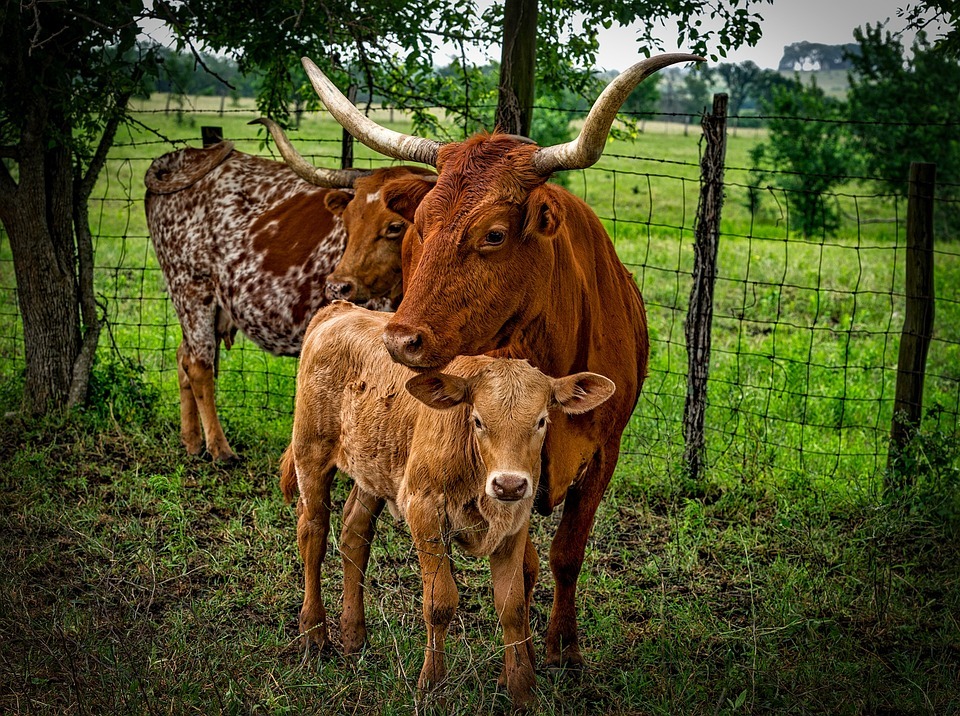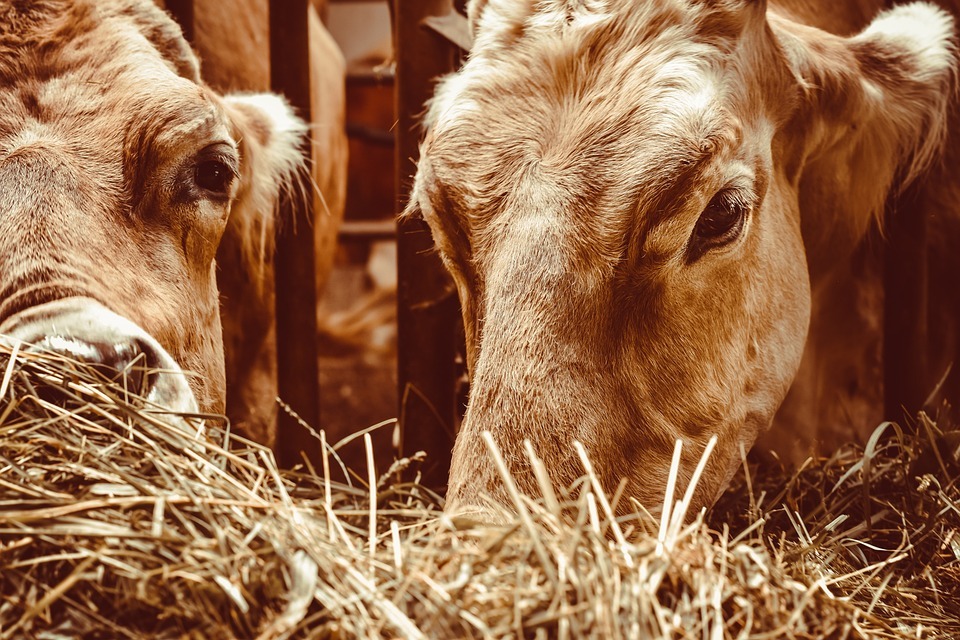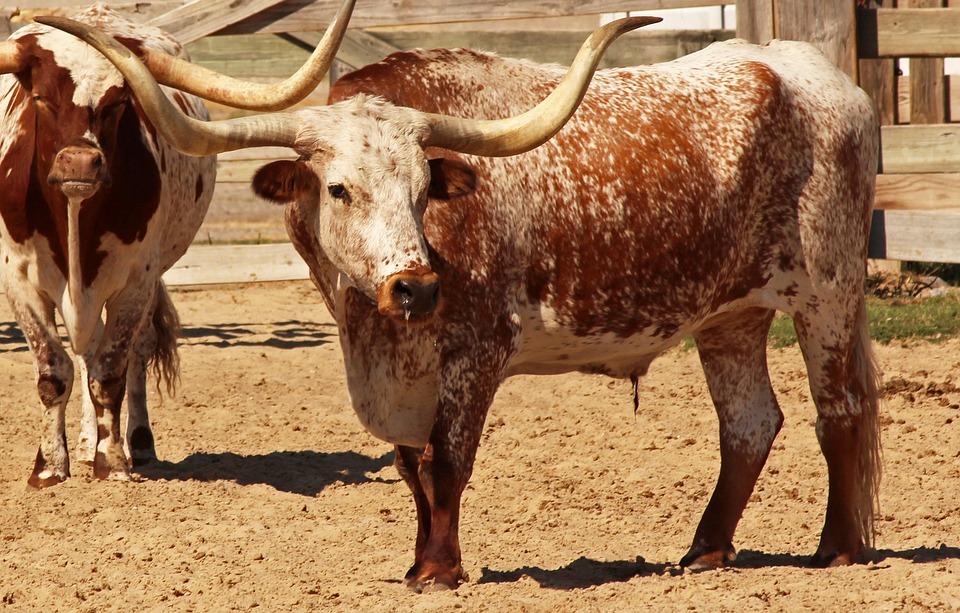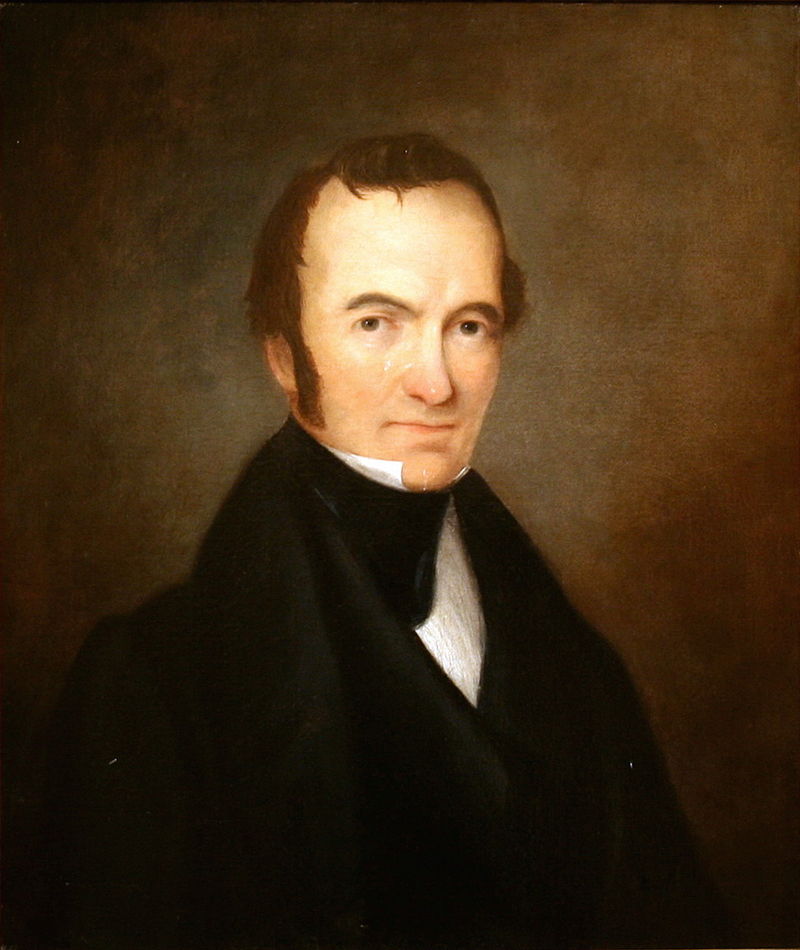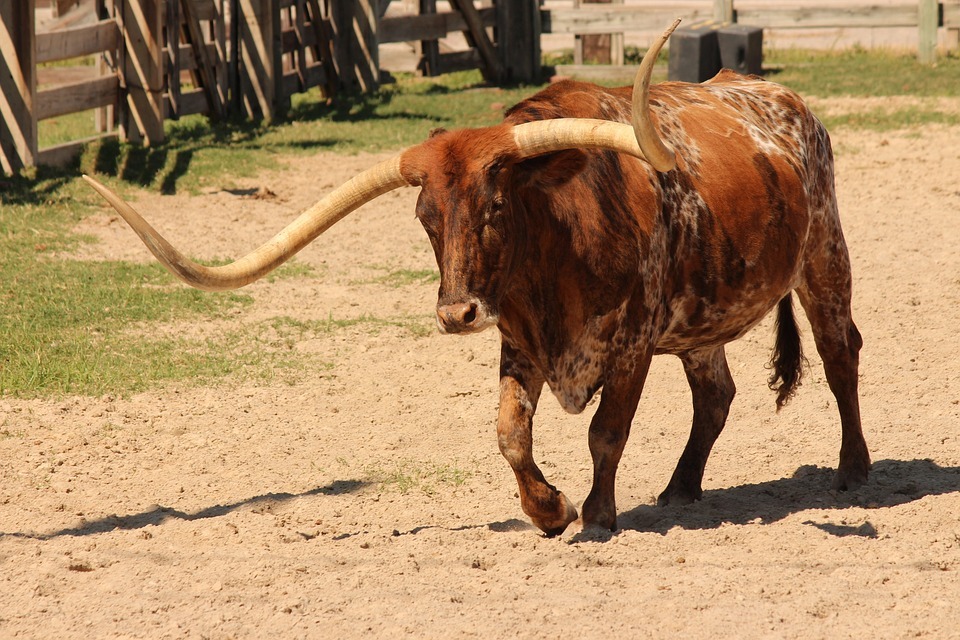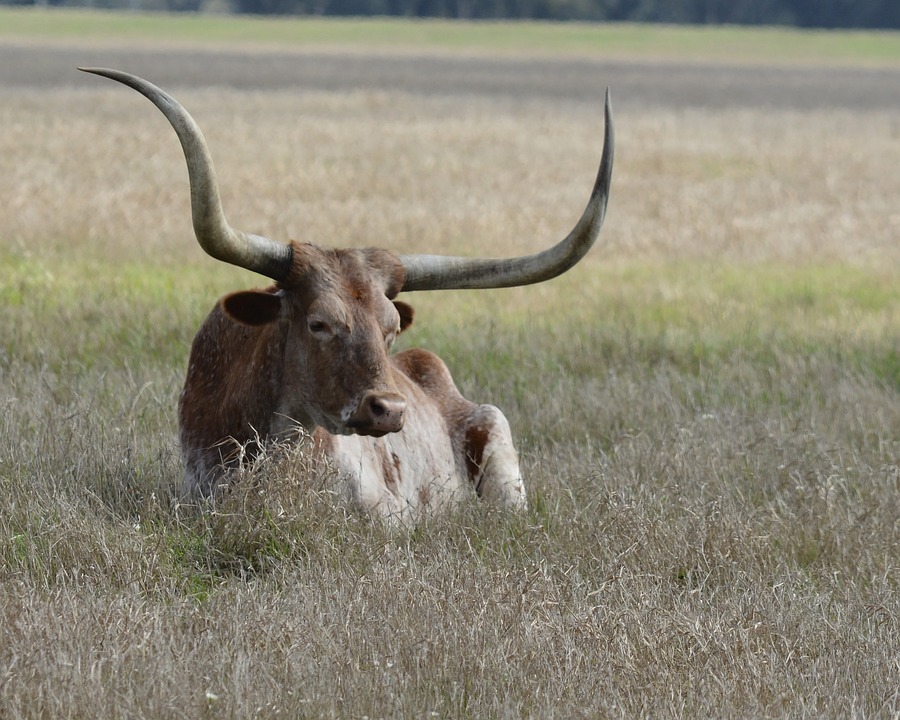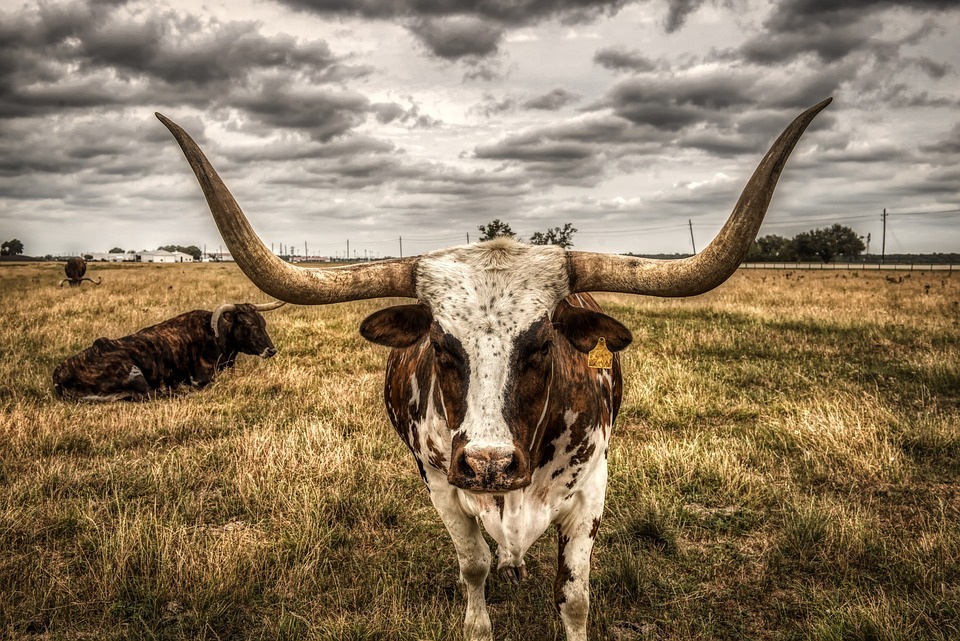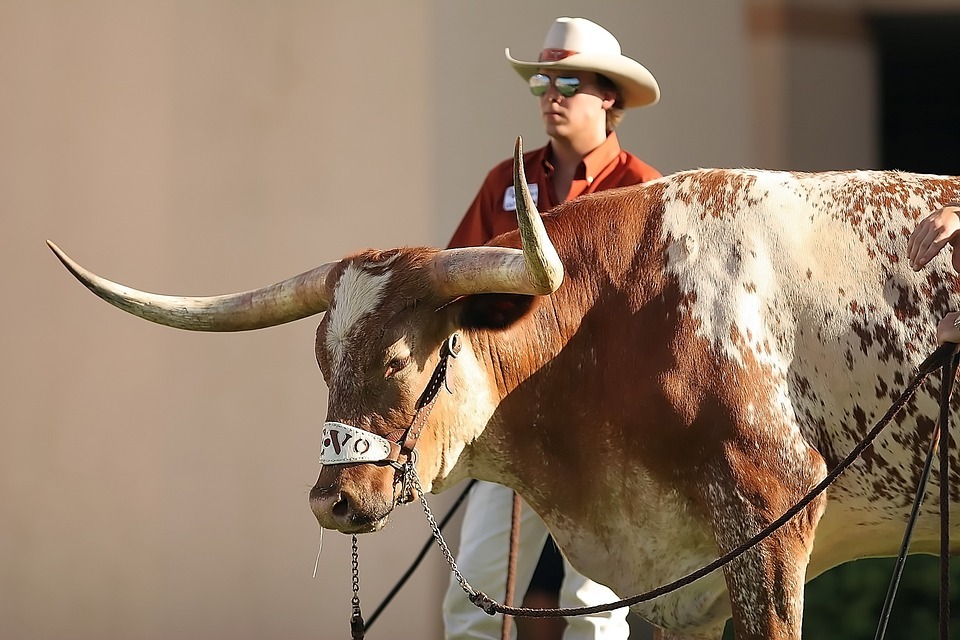Cattle ranching has been an industry and tradition in Texas for more than 300 years, and while it has been a long time since cattle ranching was introduced in the state, there are actually not a lot of people that know when and how it actually started. To know more, here is the timeline of cattle ranching in Texas.
The 1400s and 1500s – Early Roots of Texas Cattle Ranching
It is believed that Texas ranching began in the late 1400s when Christopher Columbus brought the first Spanish cattle during his second voyage to Hispaniola, an island that is located to the southeast of North America. [1] Christopher Columbus is particularly known in American history as the one responsible for the European colonization of Central and South America.
From Hispaniola, ranching for the Spanish cattle would spread in the 1500s throughout Mexico and in the lands to the north that would eventually become known as Texas. The Spanish cattle are considered to be the precursor of the Texas longhorn, a breed of cattle that is particularly known for its long horns that can extend for up to 7 feet.
The 1600s – Ranches of Spanish Missionaries
In the 1600s, it was reported that there were about a thousand cattle that were found in the El Paso region of Texas. The cattle that were in El Paso were owned by Spanish missionaries, who would eventually be joined by private ranchers in the mid-18th century. The cowhands or helpers of the Spanish missionaries and private ranchers were called vaqueros, who were regarded as independent contractors that could own horses and saddles but were working for a rancher, also known as patron. [1]
The 1700s – The Growing Cattle Population in Texas
In the early 1700s, Spain, France, and England were struggling to take control of North America. In order to prevent France (who were controlling the neighboring state of Louisiana) from getting the lands of Texas, Spain created six missions, which included Misión Nuestra Señora de los Dolores de los Ais in 1721. The location of this mission is now known as the Mission Dolores State Historic Site. [2]
By the 1730s, there were about 4,800 Spanish cattle in Texas that were owned and taken care of by Spanish priests, colonists, and soldiers. The missions were eventually abandoned by the 1760s, but the ranches that housed cattle remained. In the 1770s, Spanish cattle were free to roam in different areas of Texas, and it was in this period where they began multiplying and eventually came into contact with the native eastern cattle breed in North America. The crossbreeding between the two breeds eventually led to the creation of the Texas longhorn.
The 1810s and 1820s – The Austin Colony
At the beginning of the 1800s, the population of cattle decreased due to them being driven to Louisiana to turn them into military rations of beef during the American Revolution (1765 to 1791). The stock of cattle also decreased significantly when the Mexican War of Independence started in 1810.
By 1821, which was also the year when the Mexican War of Independence ended, the Spanish ranches were eradicated. However, the Spanish ranches were replaced by the Austin Colony, which was founded by Stephen F. Austin along with other Anglo-American settlers. [1] Stephen F. Austin is known as the “Father of Texas” because of his success in leading the second and most successful colonization of Texas in 1825.
The 1830s to 1850s – Growth of the Texas Ranching Business
In the 1830s, the Anglo-American settlers built their ranches with the idea of combining the ranching techniques of the east with the Spanish techniques. [1] The combination was a success, and the cattle population began increasing, which then allowed the ranchers to produce more beef for the Austin Colony. By the 1850s, the cattle ranching business in Texas was flourishing despite the setbacks of the Texas Revolution (1835 to 1836) and the Mexican-American War (1846 to 1848).
The 1860s – Rise of the Texas Longhorn
By the 1860s, the Texas Longhorn became the breed of choice for many ranchers in Texas due to its suitability in the style of ranching that the Anglo-American settlers created. The Texas Longhorn has a sturdy and lean body while also being durable and strong enough to withstand the harsh weather conditions of Texas. It was the popularity of the Texas Longhorn that led to Texan ranchers being able to import beef to other areas in North America, specifically Kansas and Illinois.
The 1870s – Texas Cattle Drive Era
In the 1870s, the Texas cattle drive era began. The cattle drive is a process wherein Texas longhorns were driven out of Texas and to the north. [2] The process of delivering longhorns for breeding or for slaughtering was sped up thanks to the railheads and railcars that are becoming more available in Texas and some areas in North America. However, the cattle drive era was short-lived, as many ranchers and farmers outside of Texas noticed that their cattle were dying a few days or weeks after coming in contact with Texas Longhorns.
The 1880s – Texas Fever
It was in the 1880s when the “Texas Fever” was discovered. The “Texas Fever” is a disease that affects cattle and originates from ticks that are carried by Texas Longhorns. While Texas Longhorns are strong and resilient enough to avoid infection from ticks, the other breeds that come into contact with a Texas Longhorn are prone to getting the “Texas Fever.” [2] Because of how deadly the ticks on the Texas Longhorns are for other breeds of cattle, the Texas Longhorn’s demand began to decrease until the issue nearly led the breed to extinction since nobody outside Texas wanted the state’s cattle.
The 1920s to 1940s – Saving the Texas Longhorn
The extinction of the Texas Longhorn was prevented in 1927 when the government tried to save the breed by preserving pure Texas Longhorns at the Wichita Wildlife Refuge in Oklahoma. The government sent federal agents to the said wildlife refuge, and it was in that location that the agents selected the purest longhorns to preserve the breed.
Besides the government, private organizations and citizens have also helped with the preservation of the Texas Longhorns. One of the private citizens that are instrumental in preserving the breed was J. Frank Dobie, a professor at the University of Texas at Austin who wrote “The Longhorns,” a book published in 1941 that provided details about the Texas Longhorn and why it should be preserved. [2]
The 1960s and 1970s – The Founding of the Texas Longhorn Breeders Association of America (TLBAA)
In 1969, the preservation project of the government, with the help of private organizations and citizens, was deemed a success due to the rising population of the purebred Texas Longhorn. One of the organizations that helped with the preservation of the breed in the 1960s and 1970s is the Texas Longhorn Breeder Association of America (TLBAA), which was founded in 1964 in San Antonio, Texas. [3]
The TLBAA is a nonprofit organization that is founded to protect the Texas Longhorn by providing guidelines about proper breeding practices. In addition, the association is also pushing for technological and scientific advances that help in preserving the Texas Longhorn breed. This organization was founded by Texas Longhorn breeders, and their first meeting was held in September 1964 in Lawton, Oklahoma.
The 1990s – Texas Leading the Nation in Cattle Production and Population
By 1995, Texas became the leading source of cattle and calves, as that state has about 15.1 million cattle and calves in ranches or farms. In addition, the total value of cattle and calves in the state around that time was $8.532 billion, which was quite a large value in the 1990s. Because of how big the state of Texas is compared to most farming states, Texas is home to more than 185,000 farms and ranches. [4]
Besides cattle ranching and breeding Texas Longhorns, the agriculture industry of Texas has grown to cater to meat-packing factories, advanced slaughterhouses, and commercial feedlots. The speed of ranching, farming, and meat packing has also increased because of the rising accessibility and abundance of computers and automated machines.
The 2000s and 2010s – Beef Cattle Production in Texas
In the 2000s and 2010s, cattle ranching was still an important industry or business in Texas. The state has remained number one in beef cattle production in the US from the 1990s up to the 2010s. The number one ranking may even remain beyond the 2010s because no US state comes close to Texas when it comes to cattle ranching. As of the 2010s, Texas has more than 248,000 farms and ranches that cover about 130.2 million acres of land. [2]
Because of how integral cattle ranching is in Texas, the business has become a part of the state’s culture. One of the most popular college football teams in the United States, the University of Texas at Austin’s Texas Longhorns, is named after the breed that was discovered and bred in Texas. [2] The team’s mascot, “Bevo,” is actually a live mascot that is a Texas Longhorn steer. The first longhorn named “Bevo” was first used as the official mascot of the University of Texas at Austin in 1916. Over the years, there have been many longhorns that bore the name “Bevo.” As of 2016, there have been 15 longhorns that are named “Bevo” and served as the mascot for the University of Texas at Austin.
And that is the timeline of cattle ranching in Texas. As evident in the timeline, cattle ranching has been around in Texas for many years, and its longevity allowed the business to become a part of the tradition and culture of the US state. Because of how successful cattle ranching is in the state, it is likely that the business will remain in Texas for many more decades in the future.
References
[1] The Story of Texas. (n.d.). Cattle Ranchers – Big horns, big ranches, and even bigger legends. The Story of Texas. Retrieved March 20, 2023, from https://www.thestoryoftexas.com/discover/campfire-stories/cattle-ranchers
[2] Minsker, J. (2018, February 21). The Texas Tradition of Cattle Ranching Began in Tejas. Texas Historical Commission. Retrieved March 20, 2023 from https://www.thc.texas.gov/blog/texas-tradition-cattle-ranching-began-tejas
[3] Texas Longhorn Breeders Association of America (n.d.). Texas Longhorn History. Texas Longhorn Breeders Association of America. Retrieved March 20, 2023, from https://www.tlbaa.org/about/
[4] Richardson, T.C. and Hinton, H.P. (2019, April 30). Ranching. Texas State Historical Association. Retrieved March 20, 2023, from https://www.tshaonline.org/handbook/entries/ranching

